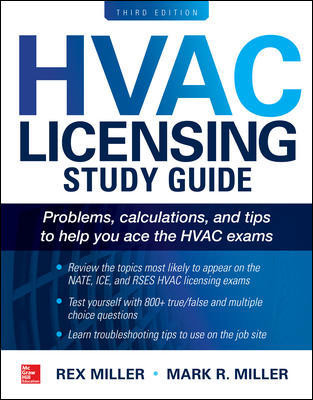Sizing the humidifier
The humidification load is based on the volume of outside air being introduced. Recall that the economizer comparison model last month involved a 50,000-cfm air-handling system with a minimum requirement of 10% OA. Without any economizer controls, the outside air volume would be a constant 5,000 cfm. And at 75 degrees F and 50% rh space conditions, the humidity ratio at sea level would be 65.4 grains/lb. So the humidification load without an economizer at sea level would then be 5,000 x 65.4/7,000 x 0.075 x 60 = 210 lb/hr.If we add an airside economizer, the outside air volume can vary from the minimum of 10% to as much as 100% of the total flow as the control dampers modulate to maintain setpoint whenever outside air conditions allow. If we simply assume the humidification load is based on 100% OA at zero humidity, the load would be 50,000 cfm x 65.4/7,000 x 0.075 x 60 = 2,102 lb/hr.
However, this method could result in a humidifier that is significantly oversized, causing potential control problems. The actual load can be much lower because the outside air humidity ratio is usually higher when higher outside air volumes are required to maintain setpoint. The best way to determine the capacity of a humidifier for an airside economizer system is to perform a simulation similar to this example and obtain the maximum value.
In this simulation, the outside air volume and associated humidification load is calculated for every hour from the mixed air conditions and corresponding outside air humidity ratio. As an example, the actual maximum load from the hourly calculations for Boston is 1,650 lb/hr. As you can see, the capacity of the humidifier increases significantly when airside economizer controls are incorporated (from 210 lb/hr to 1,650 lb/hr in this example). On the other hand, if a waterside economizer system is used, the humidification load is still 210 lb/hr because the outside air volume remains at the minimum setting.
The results
Last month's column showed us that without a humidifier, the enthalpy economizer offered the most cost savings in comparison to dry bulb and waterside economizers. Enthalpy economizers take advantage of additional (partial) cooling when outside air conditions permit by opening the outside air dampers to 100% when the outdoor air enthalpy is less than the return air enthalpy. Figure 2 illustrates that when a steam humidifier is added to the system, the results are reversed. The large amount of outside air used by enthalpy economizer controls requires a significant amount of humidification to maintain space humidity. Dry bulb economizer controls require slightly less humidification because the dampers are at minimum outside air position more often.The results show that the waterside economizer is obviously the best alternative for use with a steam humidifier because the volume remains constant at 10% OA. In fact, both airside options resulted in a higher total annual cost than the system with no economizer at all.
That being said, keep in mind that our results are based on the assumptions listed in Figure 2, including a minimum space rh setpoint of 50%. A lower rh setpoint combined with lower cooling equipment efficiency, higher electric rate, or lower heating rate could prove that an airside economizer actually does make sense with steam humidification. That's why it's important to perform the analysis: Every project is different in its own way.
Something else to consider: What if the humidification can be accomplished cheaply by using waste heat? Or what if we used an adiabatic humidifier (evaporative or ultrasonic)? The last question provides a perfect segue way into next month's column, when we take a look at some of the advantages that adiabatic humidifiers may have over steam when used with economizer systems. ES
EDITOR'S NOTE: The tables associated with this article do not translate to the Internet. To view the images, please refer to this month's print version of ES.


